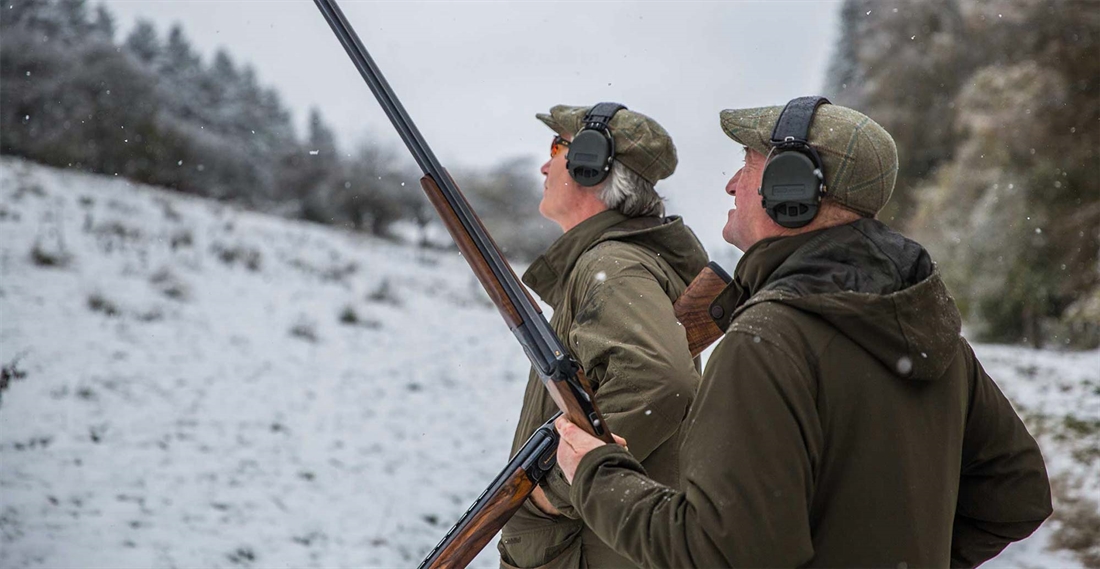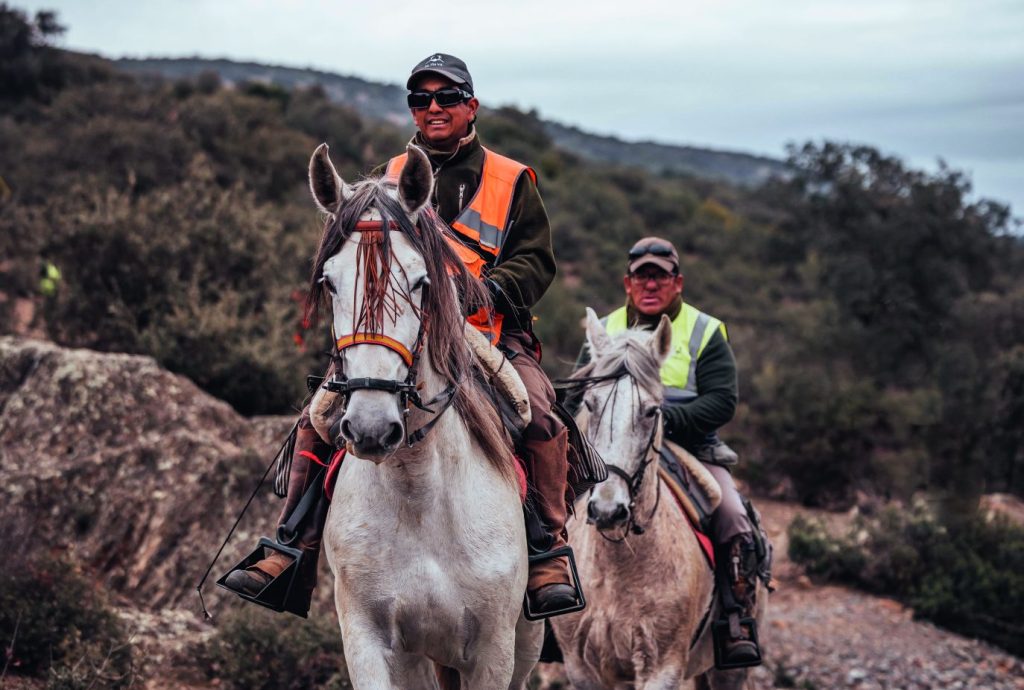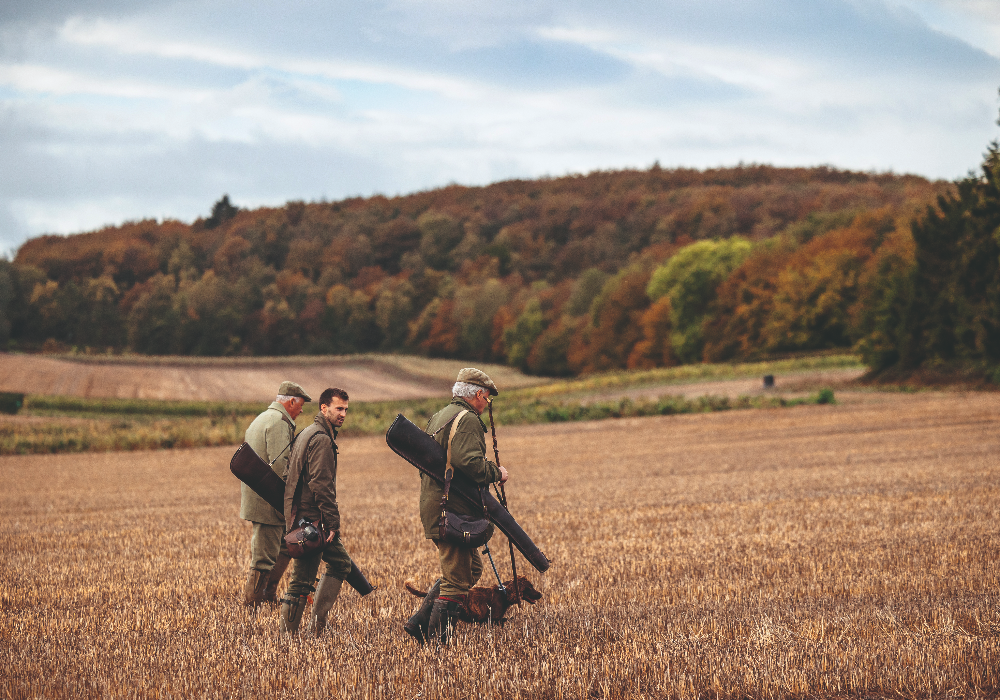External factors that can effect shooting performance
Gunfit, gunmount, footwork, timing and follow through are all paramount to good shooting, but if due attention is not paid to the other variables on a shoot day, you might find yourself walking back to the gunbus feeling nonplussed.

Just as with any sport, preparation is key to consistently good performance when game shooting. In this issue, however, rather than focus on the minutiae of technique, we shall consider those variables which really should be quite obvious but so often catch game Shots out.
Gunfit, gunmount, footwork, timing and follow through are all paramount to good shooting, but disregard the variables below, and you’ll be kicking yourself.
Wind speed and direction
Being aware of the wind speed and direction before you get to your peg on a drive can help enormously when judging the line and speed of pheasants and partridges. A bit of fieldcraft and homework go a long way.
Stood in a valley bottom, you are not best-placed to ascertain quite what the wind is doing and how it will affect the flight of gamebirds 30–50 yards above you. As a rule, I always check the forecast the night before I shoot. And then I assess the conditions when I arrive the next morning. With the help of a compass (most smartphones have them now), you can keep track of wind direction relative to each drive throughout the drive. Not only does this help to establish whether the birds will be flying into a crosswind, headwind, or with a tailwind, but it also prepares you mentally for the birds you will be shooting at.
At the same time I check the pressure; pheasants and partridges tend to fly much better in low pressure when there is less resistance acting upon their feathers.
Don’t underestimate the influence of muscle memory, either. If, for example, you were shooting pheasants with the wind at their tails earlier in the week, and you arrive at a shoot but don’t register that the birds on the first drive, at a similar height, will be flying into the wind, you may well shoot in front of them. Of course, “more lead, Sir” is the most generously given piece of advice in the shooting field, but, contrary to popular belief, you can miss birds in front.
Similarly, in a crosswind (when the wind is blowing along the line of Guns), bear in mind that birds crossing over your left shoulder will be flying slightly differently to those crossing over your right shoulder. With the wind blowing from left to right as you face the drive, for example, those crossing your left shoulder will be flying slightly into the wind, whereas those over your right shoulder will have the wind behind them more. They might be flying at the same height, and at a similar angle, but they will be travelling at different speeds which can make it more challenging to shoot them with any degree of consistency.
Bright conditions
We’ve all done it: after making our way to the first drive in overcast conditions, the cloud breaks, the sun appears and all we have with us is a pair of light-enhancing shooting glasses with not a peaked flatcap in sight. It’s a schoolboy error that can make shooting very difficult; squinting into the sun, trying to block its rays with one hand then the other, and taking birds much later than we normally would do are not conducive to good shooting. And it’s Sod’s Law that you’ll be in the hot-seat!
Again, a bit of prior preparation can prevent such a scenario.There’s no excuse in today’s age of weather apps with their hour-by-hour forecasts, not to have a good idea of the conditions you’re likely to be shooting in. It’s wise to anticipate all scenarios, and thus remain able to concentrate on your shooting and not be distracted by blinding sunshine.
Cold weather
At this time of year, as temperatures regularly flirt with freezing point, it’s well worth paying a bit of attention to what might make shooting more comfortable. And that’s the key – yes, you want to stay warm and dry, but you also need to be able to shoot!
Remember, on a busy drive you will invariably warm up anyway. I find that good quality thin layers – think skiwear base layers – are great; they keep the core of the body warm but do not add too much bulk or restrict movement. As you add layers to keep warm, remember that you are artificially lengthening the stock of your gun and as a consequence, with your front hand in the same position, you will snag the butt on your clothing as you mount the gun. You may have to move the front hand back slightly on the fore-end, but first and foremost I’d recommend investing in thin thermal layers so your gunfit and gunmount that you have spent the rest of the year growing used to is not affected.
Gloves are another area worthy of attention. Bulky shooting gloves are not only impractical but they can be unsafe. There are now skin-fit type gloves on the market that are much better but I personally prefer to keep my hands warm in my pockets with a hand-warmer before the drive gets underway. I like to be able to feel the gun.
Fatigue
Everybody seems to be busy nowadays, so driving up, down or across the country late in the evening in order to shoot the next day is not uncommon. Most significantly in terms of shooting performance, tiredness affects eyesight, eye dominance and how well your eyes work in general – i.e. judging the speed, range and line of birds.
A good night’s sleep before a day’s shooting certainly helps, but so too does ensuring you keep well hydrated. Avoid drinking too much coffee, and to a lesser extent tea. Not only are they diuretics which can cause dehydration, but too much caffeine on a shoot day morning will not help you, either. I keep a bottle of water in my car that I can sip on throughout the day. Staying hydrated is important for co-ordination.
Overindulgence
Linking in nicely with fatigue is ‘overindulgence’. You’ll be familiar with the scenario: The menu is passed around the table at dinner the night before you are shooting, and you are immediately drawn to the 22oz steak with all the trimmings. By the time your main course arrives, it’s 9:30pm, and then you have a whole night of trying to digest it ahead of you. And don’t forget your full English the next morning. The first drive gets underway and so do the stomach cramps… Hindsight is a wonderful thing! This a distraction all of us can do without.
In the same vein, if you have one too many shandys the night before a day’s shooting, don’t be surprised if it takes you the first three drives to find a bit of form. If you were running the 100 metres the next day, you wouldn’t hit the bottle, would you? Shooting shouldn’t really be any different. And let’s not forget that going overboard the night before is quite disrespectful to the rest of the team, your host and the keepers who have worked so hard to provide your sport.
Related Articles
Get the latest news delivered direct to your door
Subscribe to Fieldsports Journal
Elevate your experience in the field with a subscription to Fieldsports Journal, the premium publication for passionate country sports enthusiasts. This bi-monthly journal delivers unparalleled coverage of game shooting, fishing and big game across the UK and beyond.
Each issue offers a stunning collection of in-depth features, expert opinions and world-class photography, all presented in a timeless yet contemporary design.
Save 10% on shop price when you subscribe, with a choice of packages that work for you. Choose from Print & Digital or Digital only with each journal delivered directly to your door or via the app every other month, plus access to past issues with the digital back issue library.








